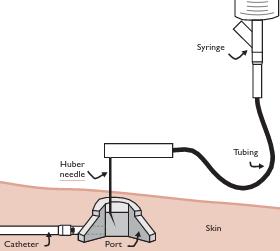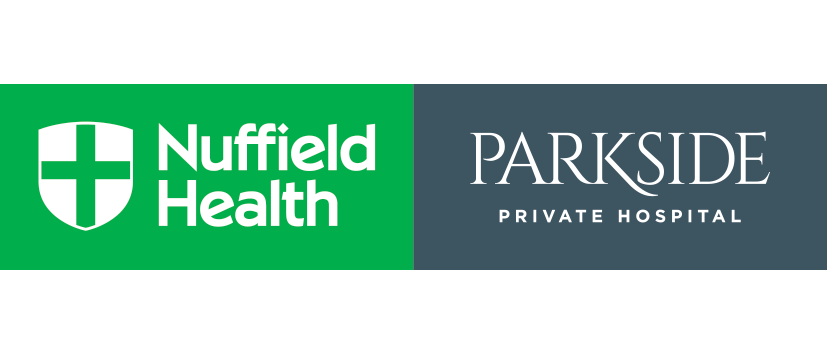Portacath
This page will provide you with information about portacaths. For further details, please speak to your consultant.
What is a portacath?
A portacath is a small, plastic tube that is implanted beneath the skin and inserted into the subclavian vein. If a portacath is used, there is no need for recurring venepuncture or cannulation.
Portacaths can be used for a variety of purposes, including taking blood, chemotherapy administration and hydration fluids. Your nurse will apply local anaesthetic cream in order to numb the area around the port.
Only one needle is inserted into the perimeter of the port. Devices which are implanted must be accessed aseptically by a nurse; they will do this using a specific needle known as a ‘gripper.’ The gripper is connected to a line with a clamp, which enables secure access of the line (see Figure 1.)

What will happen during the procedure?
A blood test will be carried out prior to having a portacath inserted to determine whether or not your blood results are all within the required parameters.
If you are eligible to receive a portacath, you will be given general anaesthetic for the procedure. Two minor incisions will be made into your skin to enable the surgeon to place the portacath in your chest. To stabilise the portacath, the portal body will be positioned half an inch beneath the skin and over a bony area. Your surgeon will apply dissolvable stitches at the insertion site and around the port. A singular stitch will be applied over the port and this will be taken out after one week.
An x-ray of your chest will be carried out after the procedure to ensure the portacath is positioned correctly. Painkillers will be offered to you if you feel any discomfort. You will be in hospital for approximately three hours and will be discharged the same day or the following day at the very latest.
Recovery
After inserting the portacath the area will be dressed to allow for healing. This dressing will be taken off after five days, following this your nurse will use chlorhexidine solution to clean the portacath before using a translucent dressing to secure the device.
Your portacath will be flushed each time you visit the hospital. If it is not in use then it will be flushed monthly, using saline solution and heparin sodium to ensure it does not become blocked.
Can I carry out my normal activities with a portacath?
You are able to have showers and baths as normal after having a portacath inserted. However, you should take particular care of your dressing during the first few days. You are able to go swimming once the incision site has fully healed.
Risks and complications
Any risks or complications will be discussed in advance of your treatment with your expert consultant.
How is the portacath removed?
When you have completed your treatment your nurse will arrange for your portacath to be removed under anaesthetic. A small incision will be made by the surgeon over the port so they can remove the portacath.
It is common to feel slight discomfort after this procedure and mild painkillers can help you to control the discomfort. A dissolvable stitch will be applied to the area and it will be dressed.
For further information please click here or call the Chemotherapy Day Unit on 020 8247 3369. After hours you can contact the Oncology Ward on 020 8971 8019.
This page is intended for information purposes only and should not replace advice that your relevant health professional would give you.

